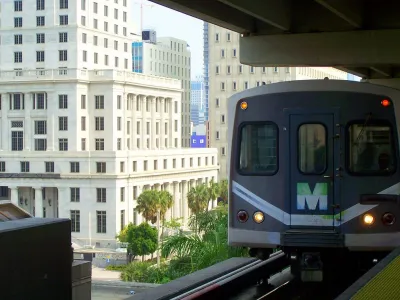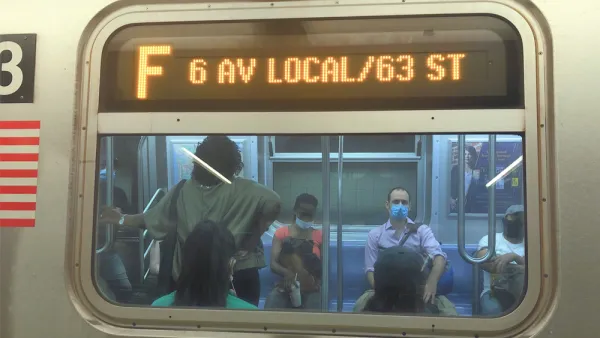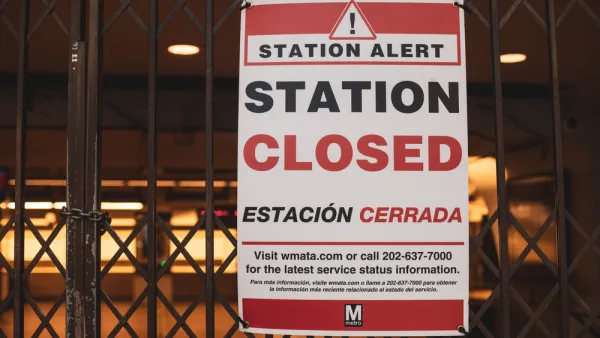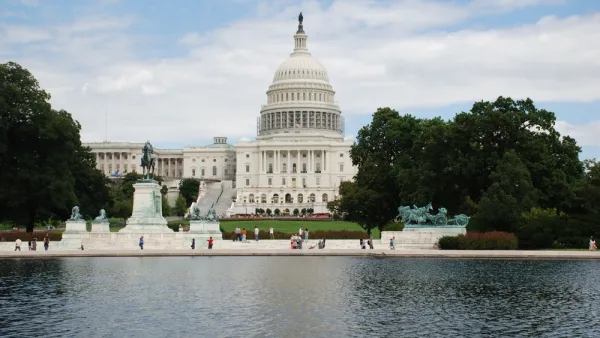The funding in the draft stimulus funding package making its way through Congress falls short of the total requested by the American Public Transportation Association, but would go a long way to helping transit agencies weather the pandemic.

An article by TransitCenter provides insight into the funding proposed for U.S. transit agencies by the economic stimulus plan making its way through Congress, promised by Democratic congressional leadership for approval before the end of the month.
With public transit agencies stuck in a death spiral of declining ridership and revenues during the pandemic, much of the attention of these repeated rounds of stimulus has concerned whether the federal government is providing enough support for public transit. (If approved, this will be the third federal stimulus package, after the CARES Act, approved by Congress in March 2020, and COVID-19 Emergency Relief Act of 2020, approved in December 2020.)
According to this article by TransitCenter, the $30 billion in funding proposed in the current version of the stimulus package would support transit agencies until some point between the middle of 2022 and the end of 2023. The Biden administration had previously proposed $20 billion for transit, which would last until the beginning of that spectrum. The American Public Transportation Association requested $39.3 billion, which TransitCenter estimates would last until the conclusion of that spectrum.
"In brief, the more emergency funding is secured now, the longer agencies will be able to maintain service before needing another round of relief. Because economic activity and transit ridership are not expected to fully rebound immediately following a mass vaccination campaign, the fiscal disruption for transit agencies is projected to last years," according to the article.
The article includes details on the methodology of the analysis and also provides more findings about the depth of transit revenue declines in 2020, and the projected declines in revenue for 2021.
The article also includes a call to action regarding TransitCenter's recent advocacy work for new funding to support transit operations, in addition to capital investment funding.
FULL STORY: Analysis: How Long Will New Emergency Relief Funds Last for Transit Agencies?

National Parks Layoffs Will Cause Communities to Lose Billions
Thousands of essential park workers were laid off this week, just before the busy spring break season.

Retro-silient?: America’s First “Eco-burb,” The Woodlands Turns 50
A master-planned community north of Houston offers lessons on green infrastructure and resilient design, but falls short of its founder’s lofty affordability and walkability goals.

Delivering for America Plan Will Downgrade Mail Service in at Least 49.5 Percent of Zip Codes
Republican and Democrat lawmakers criticize the plan for its disproportionate negative impact on rural communities.

Test News Post 1
This is a summary

Test News Headline 46
Test for the image on the front page.

Balancing Bombs and Butterflies: How the National Guard Protects a Rare Species
The National Guard at Fort Indiantown Gap uses GIS technology and land management strategies to balance military training with conservation efforts, ensuring the survival of the rare eastern regal fritillary butterfly.
Urban Design for Planners 1: Software Tools
This six-course series explores essential urban design concepts using open source software and equips planners with the tools they need to participate fully in the urban design process.
Planning for Universal Design
Learn the tools for implementing Universal Design in planning regulations.
EMC Planning Group, Inc.
Planetizen
Planetizen
Mpact (formerly Rail~Volution)
Great Falls Development Authority, Inc.
HUDs Office of Policy Development and Research
NYU Wagner Graduate School of Public Service





























